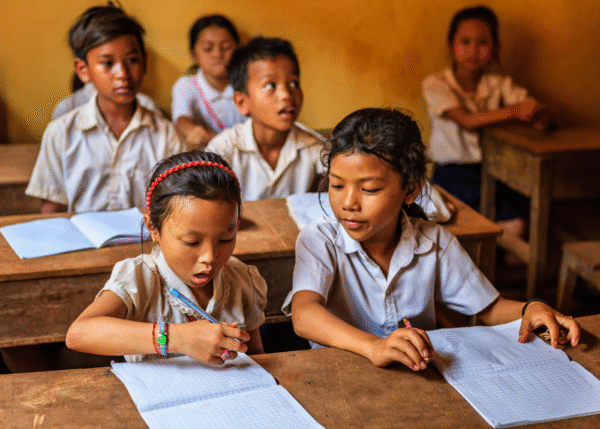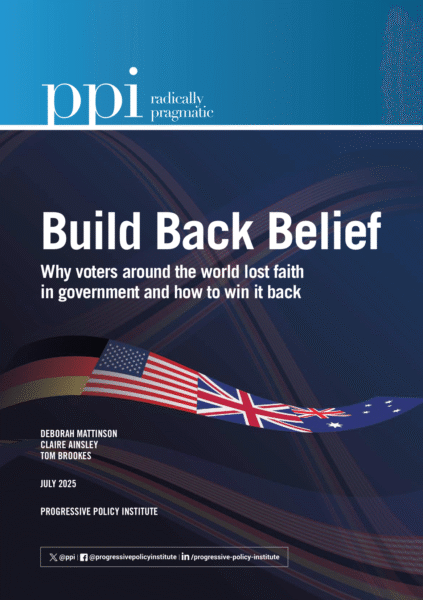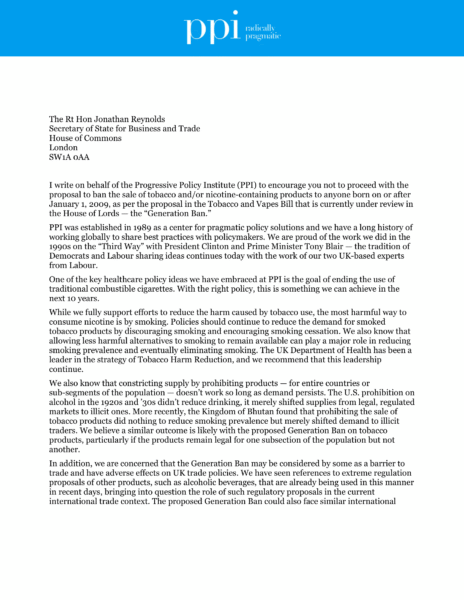FACT: The world child labor count has gone down by more than 100 million since 2000.
THE NUMBERS: Child labor by year, worldwide* –
| 2024 |
137.6 million |
| 2020 |
160.0 million |
| 2016 |
151.6 million |
| 2012 |
168.0 million |
| 2008 |
215.2 million |
| 2004 |
222.3 million |
| 2000 |
245.5 million |
* International Labour Organization estimates, from surveys done 2001-2025.
WHAT THEY MEAN:
The American mental image of child labor emerges from early 20th-century social reform: Progressive Era photographs of wan children in coal mines and textile mills; factory-focused state government programs in the 1910s; national laws drawn up by Frances Perkins’ Department of Labor in the 1930s. For those looking abroad, the emphasis has been similar: factories, physical goods, supply chains, and children. International Labour Organization research, though, suggests that this is a relatively small share of modern-day child labor. Their most recent worldwide estimate, released on June 11, finds child labor mainly rural, concentrated in very poor countries, and steadily falling, especially in Asia.
As a point of departure, the ILO defines “child labor” as follows:
“[W]ork that is mentally, physically, socially or morally dangerous and harmful to children [aged 5 to 17]; and/or interferes with their schooling by: depriving them of the opportunity to attend school; obliging them to leave school prematurely; or requiring them to attempt to combine school attendance with excessively long and heavy work.”
ILO statisticians have been publishing periodic in-depth analyses of child labor every four years or so since 2002. Their reports include worldwide estimates; the regions in which child labor is most common and those in which it is rarest; change over time; and the “economic sectors” in which most child and teenager laborers work.
Their first report, for the year 2000, found 245.5 million boys and girls (one in six of that year’s 1.53 billion children) doing some form of child labor. The most recent, out in June, estimated 138 million child laborers among 1.90 billion children. Accepting some margin of error, the ILO surveys thus show the worldwide child rate falling by half in a generation — from 16.0% to 7.8% of all boys and girls — and the actual number of child laborers down by 108 million. Three basic points from these reports, then a thought on the American role:
1. Child labor rates closely track poverty rates. The world’s 26 poorest countries, with about 8% of the world population, are home to 42% of all child laborers: 57.7 million, one in four (23.5%) of these countries’ 245 million children. Child labor rates in high-income countries — the United States and Canada, western Europe, Japan, Korea and Taiwan, Australia and New Zealand — average 0.7%, with a total of 1.6 million child laborers. In between these poles, rates are 3.6% in upper-middle-income countries and 7.5% in lower-middle-income countries.
2. Child labor is mostly rural. The 2025 report finds 61% of child laborers — about 84 million boys and girls — in agriculture, mostly in small family farms and enterprises. This is often hazardous: per the ILO, child labor in agriculture often involves “exposure to sharp tools (machetes) and dangerous machinery (tractors), risk of snakebites and injuries from other animals, exposure to extreme environmental conditions, and exposure to agrochemicals including inorganic fertilizers and pesticides.” Another 27% of child laborers, 37 million, are in simple urban services such as house-cleaning, food delivery, and shops. The remaining 13%, or 18 million, are in “industry” — that is, on construction sites, in mines, and in factories. Industry work, then, is a relatively small share of all child labor, but appears especially dangerous: 60% of “industry” child labor (meaning 11 million children) is in ‘hazardous’ work, as opposed to 30% in agriculture and 48% in services.
3. Child labor has fallen fastest in Asia. Since the ILO’s first report a quarter-century ago, Asia-Pacific countries — economically growing fast, and demographically rapidly urbanizing — have cut child labor counts from 127 million to 27 million, and to a “rate” of 3.1%. The data:
| 2024 |
27 million |
| 2012 |
77 million |
| 2000 |
127 million |
In Latin America and the Caribbean likewise, the ILO’s estimates of child labor have dropped from 17.4 million in 2000 to 7.4 million in 2024, though the ‘rate’ is somewhat higher than Asia’s at 5.5%. (Or, adding the U.S., Canada, and Greenland to get the “western hemisphere,” 3.9%, which still leaves Asia’s child labor rate the world’s lowest.) The Arab world and the ILO’s “Europe and Central Asia” region are at 5.8% and 5.6%. Child labor is now concentrated in sub-Saharan Africa (relatively more ‘rural’ than other regions, and with 20 of the world’s 25 ‘low-income countries’). which is home to 87 million child laborers or nearly two-thirds of the worldwide total. Africa’s pattern of child labor mirrors the worldwide “sectoral” pattern, except more intensely: 70% of African child workers are on farms, and only 8% in “industry.”
How to respond? In principle, ILO’s data suggests that urbanization, economic development, and some focused government policies, have sharply reduced child labor over the last generation, especially in Asia; and that child labor is least common, but especially dangerous, in ‘industry’. With this as the backdrop, U.S. policies, usually focused on child labor in industry (or manufacturing specifically, or international “supply chains”) rather than in agriculture and services, can be criticized as targeting a relatively small part of the child labor phenomenon, but also defended as focused on especially high-risk work.
Debating whether this is still the right approach would be interesting. But unfortunately such an argument would likely miss the point, since current policies suggest that the U.S. won’t be much involved at all in next-generation efforts to reduce child labor.
The Trump administration’s rejection of open-market trade policies, and its attempt to abolish almost all development aid, mean that for the next three years (barring some very sharp turnaround), the U.S. will contribute little to the larger economic trends reducing child labor worldwide. More targeted American work on the most dangerous and worst forms of child labor may also be ending. Having stopped all Labor Department child labor and forced labor projects this spring, the administration hopes to abolish the $91 million U.S. contribution to the ILO, cut its International Labor Affairs Bureau — the group which handles these issues — by 40% (from $113.1 million to $70.2 million, and from 138 to 112 people), and shift ILAB’s remaining work away from humanitarian projects to “ensuring that American workers and businesses benefit from the Administration’s trade agenda by counteracting labor practices overseas that undermine American competitiveness.”
So, a sad U.S. note set against a picture of steady and impressive progress over the past generation. Americans can do better than this.

FURTHER READING
The ILO’s June 2025 report on worldwide child labor.
More from ILO:
Archives: The ILO reports from 2001, 2006, 2010, 2013, 2017, and 2021.
Lessons from reducing child labor through education policies in low-income countries.
And a look at child labor in agriculture.
U.S. policy now:
The Trump administration proposes cutting ILAB by 40% and “refocusing” its work on trade competition. (See under “Departmental Management”, on page 21).
… and to cut U.S. contributions to the International Labor Organization from $91 million to zero (pg. 96).
Not over yet: House Democrats hope to protect ILAB work.
U.S. policy then:
Child labor reports from the Labor Department’s International Labor Affairs Bureau (ILAB): https://www.dol.gov/agencies/ilab/resources/reports/child-labor
President Clinton oversees the 1999 negotiation and ratification of the ILO Convention on the Worst Forms of Child Labor.
From the Biden/Harris administration, then-Secretary of Labor Martin Walsh at the ILO’s 2021 conference.
… and Tom Vilsack’s USDA on addressing rural child labor at home.
And the long look back:
The National Archives reprints Lewis Hine’s classic photographs of child labor in early 20th-century American streets, mines, and factories.
Smithsonian Magazine looks back on Frances Perkins.
And Economic History has data on the decline of child labor in the U.S. after the passage of state child labor laws in the 1910s and the national Fair Labor Standards Act in 1938.
ABOUT ED
Ed Gresser is Vice President and Director for Trade and Global Markets at PPI.
Ed returns to PPI after working for the think tank from 2001-2011. He most recently served as the Assistant U.S. Trade Representative for Trade Policy and Economics at the Office of the United States Trade Representative (USTR). In this position, he led USTR’s economic research unit from 2015-2021, and chaired the 21-agency Trade Policy Staff Committee.
Ed began his career on Capitol Hill before serving USTR as Policy Advisor to USTR Charlene Barshefsky from 1998 to 2001. He then led PPI’s Trade and Global Markets Project from 2001 to 2011. After PPI, he co-founded and directed the independent think tank ProgressiveEconomy until rejoining USTR in 2015. In 2013, the Washington International Trade Association presented him with its Lighthouse Award, awarded annually to an individual or group for significant contributions to trade policy.
Ed is the author of Freedom from Want: American Liberalism and the Global Economy (2007). He has published in a variety of journals and newspapers, and his research has been cited by leading academics and international organizations including the WTO, World Bank, and International Monetary Fund. He is a graduate of Stanford University and holds a Master’s Degree in International Affairs from Columbia Universities and a certificate from the Averell Harriman Institute for Advanced Study of the Soviet Union.





